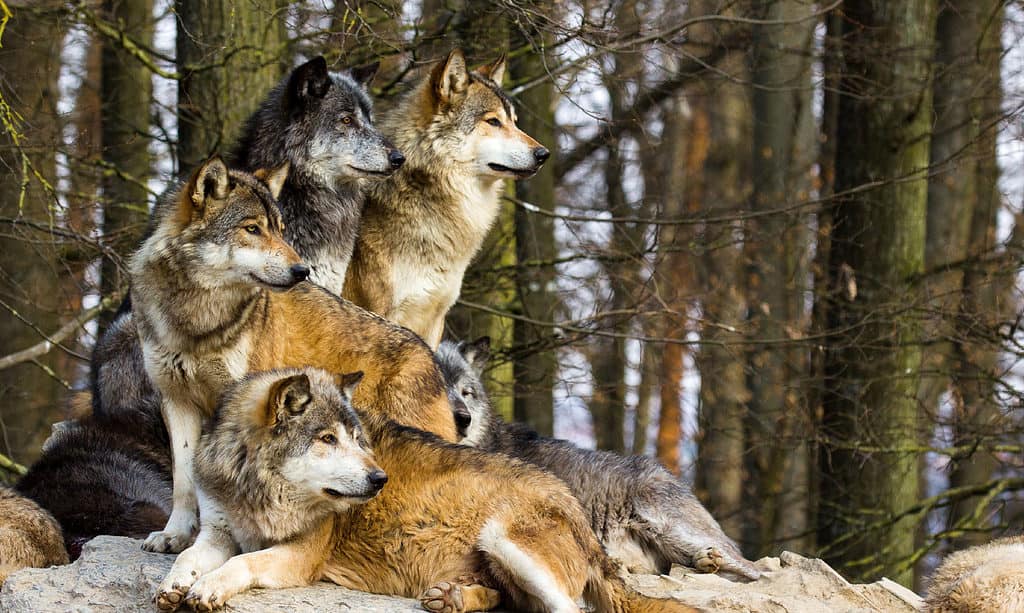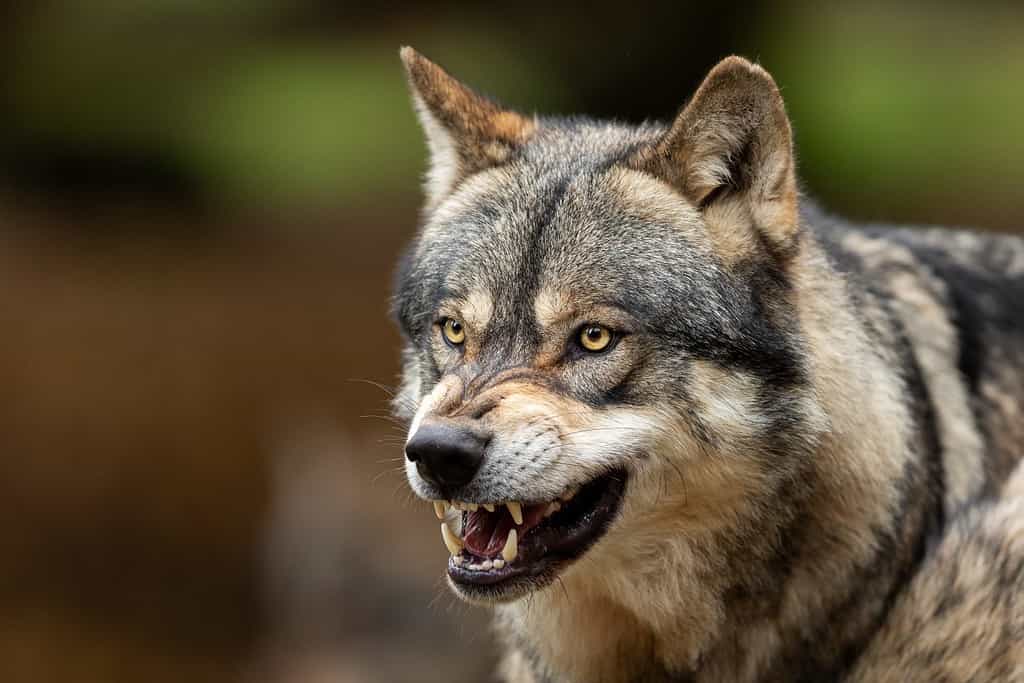People often compare society and put human meaning to wolves and their behaviors. You have the alpha and beta males, lone wolves, protectors of the pack, and so on. However, what we know about wolves has been changing over the last few years. The theories scientists once had on how wolf packs work are now considered to be mostly wrong. This may even include the differences between male vs female wolves.
While there’s no denying that male wolves are larger, the reason for their size difference might be different. Instead of for reproductive purposes, it might simply be due to their roles in the pack. Curious? Keep reading below to find out more about the differences between male and female wolves.
What Is Sexual Dimorphism?

Peacocks and peahens are good examples of sexual dimorphism.
©Christine C Brooks/Shutterstock.com
Sexual dimorphism describes the differences between the males and females of the same species. It’s a common display amongst almost all animals, from mammals to insects. While not every species has sexual dimorphism, most of them do.
However, the way sexual dimorphism displays itself in a species isn’t always the same. In spiders, for instance, most females are larger than males. In mammals, the male is often a little larger. In birds, males are usually much more bright and colorful. A good example of this is peacocks and peahens.
Most sexual dimorphism has to do with reproduction in some way. Spiders are thought to have larger females because it increases their chances of reproductive success. Male birds are more colorful to compete with other males and have a higher chance of mating with more females, or just getting a mate in general.
In mammals, animals like deer and bighorn sheep risk their health and safety to create big antlers and horns. This allows them to compete with other males and attract mates. Most of the time, sexual dimorphism is a balance between survival and having the most reproductive success.
Too large of antlers can kill a deer because they aren’t absorbing the nutrients they need, or they get stuck in trees, or they’re hunted down by people. The more colorful the bird, the more likely they are to be seen by predators. They may also be seen by their prey, making it harder for them to gather food.
Wolves are one of the many mammal species that show sexual dimorphism. The differences are minimal, and it’s not always easy to tell a female and a male wolf apart. There are some signs to look for though.
Comparing a Male and Female Wolf
| Male Wolf | Female Wolf | |
|---|---|---|
| Size | Males weigh around 95 to 100 pounds. | Female wolves tend to be a little smaller, weighing around 70 to 80 pounds. |
| Aggression | Males tend to be more aggressive. | Females are more protective and nurturing. |
| Fat Distribution | Males have up to 44 percent more fat around the sternum | Females have more fat around the rump. |
| Roles | Male wolves often partake in hunting more. | Female wolves more often stay with the young, raising and protecting them. |
Key Differences Between a Male and Female Wolf

Could you tell the difference between the males and females here?
©iStock.com/Cloudtail_the_Snow_Leopard
Though there is some sexual dimorphism in wolves, there’s not as much as you might imagine. This is why it’s difficult to tell male and female wolves apart unless they are standing right next to each other.
What’s even more interesting is the differences in male and female wolves don’t have much to do with reproduction. While that was originally the belief, newer studies are suggesting that the differences between male and female wolves may have more to do with their role in the pack.
Size
Size is the easiest and most notable way of telling male and female wolves apart. Male wolves are usually around 20 percent larger than females. They can be a maximum of 100 pounds, while female wolves are often no more than 80, depending on the species.
Not only are they larger, but male wolves have more developed muscles in the neck and mouth area. This suggests that they deal with inflicting damage more, such as protecting their pack and hunting.
Aggression

Male wolves are more likely to act aggressively than females, though both are still capable of aggressive and violent acts.
©AB Photographie/Shutterstock.com
Interestingly, the size difference between wolf genders supports the theory that males are the bigger aggressors in packs. They tend to be more likely to start fights with other wolves and packs compared to females.
Too high of aggression can be bad, but at certain levels, it’s beneficial. It makes them good hunters and protectors, and the size difference between the males and females means that they’re better equipped to handle a fight.
Fat
Though it’s not entirely clear why, male and female wolves have different fat distributions. Even if they have the same percentage of fat, male wolves have more fat around their sternum or chest. Females, on the other hand, have more fat stored in their rumps, or rear ends.
Skull
There are some arguments that the skulls of male and female wolves differ. More recent studies have determined that this might not be the case. There are a few cases of males having larger skulls. Species, hunting strategies, and diet may have a larger role in size than gender. Therefore, it can’t be used as a reliable method to determine whether a wolf is male or female.
Roles
Though the roles between male and female wolves may be different, it’s thought that it isn’t a result of their gender differences so much as the cause. Because males are more often the protectors, aggressors, and hunters, they have muscles more for fighting. Meanwhile, females are nurturers, so there’s no need for them to bulk up or develop super strong muscles for fighting.
The photo featured at the top of this post is © karlumbriaco/iStock via Getty Images
Thank you for reading! Have some feedback for us? Contact the AZ Animals editorial team.






